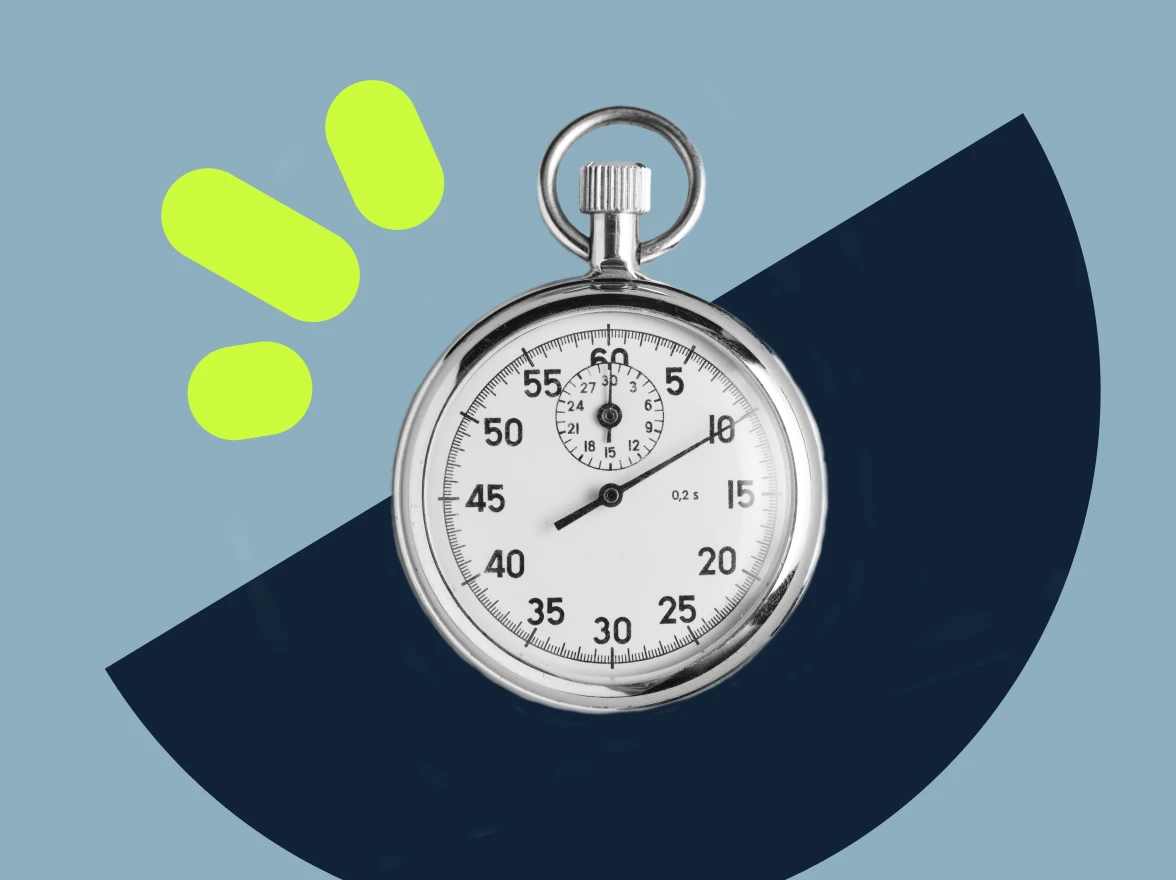Do you know what ASA in a call center is? If you do not or are not sure how it works, then you are about to discover a great opportunity to improve your business communications. In this article, we will discuss this critical call center metric along with ways to implement it in your business.
- What is a call center average speed of answer (ASA)?
- Why is the average speed of answer important?
- How do you calculate ASA in call center?
- What is a good ASA for a call center?
- What are the industry benchmarks for average speed of answer (ASA)
- How do you improve your call center ASA
- Example: How a call center can improve their ASA score
- How ASA impacts other call center metrics
- Key takeaways for improving ASA in your call center
What is a call center average speed of answer (ASA)?
ASA in a call center is a key performance indicator (KPI) that measures the average time it takes for a phone call to be answered by an agent. This metric is crucial for assessing the success of a call center’s operations and the quality of customer service provided.
Why is the average speed of answer important?
The average speed to answer is a critical metric for several reasons:
- Customer satisfaction: A lower score means customers spend less time waiting to speak with an agent. This leads to higher customer satisfaction, as long wait times can frustrate customers and lead to negative experiences.
- Customer retention: Quick response times can increase customer loyalty. Customers are more likely to return to a company that values their time and provides fast service..
- Operational success: Monitoring this call center metric (ASA) helps call centers identify faults in their operations. High ASA can indicate understaffing, poor call handling, or technical issues. By addressing these problems, call centers can improve their overall performance and reduce operational costs.
- Employee performance: ASA, meaning the call center’s critical metric, can also be an indicator of agent performance. Consistently high scores may suggest that agents need additional training or support. By using ASA to monitor and improve agent performance, call centers can ensure that their staff provides the best possible service to customers.
- Competitive advantage: The average speed of answer industry standard is important to take into account. In a market where customer service is a key differentiator, a low score can provide a significant competitive advantage. Companies that consistently offer fast and reliable customer service are more likely to attract and retain customers compared to those with longer wait times.
How do you calculate ASA in call center?
ASA calculation involves dividing the total waiting time for all answered calls by the number of answered calls within a specific period. The formula is:

Example: Suppose a call center received 200 calls in an hour. The total waiting time for all answered calls during that hour was 3,000 seconds.
Here’s how to calculate the ASA in their case:
- Total Waiting Time for Answered Calls = 3,000 seconds
- Total Number of Answered Calls = 200
This means the average speed of answer for that hour is 15 seconds.
What is a good ASA for a call center?
A good ASA call score for a contact center typically ranges from 20 to 30 seconds. This benchmark is widely accepted across various industries and is considered optimal for maintaining high levels of customer satisfaction and stable operations.
- Customer satisfaction: An ASA of under 20 seconds is considered ideal for achieving high customer satisfaction levels. Customers generally expect quick responses and are likely to be more satisfied if their calls are answered right away.
- Operations: Industry standards suggest that an ASA of 20 to 30 seconds is effective for balancing customer needs with call center resources. Maintaining an ASA within this range helps ensure that the call center is adequately staffed to handle call volumes without excessive wait times.
Overall, aiming for an ASA of 20 to 30 seconds is a good practice for most call centers to ensure quick customer responses and effective operations.
What are the industry benchmarks for average speed of answer (ASA)
Different industries may have varying benchmarks based on their specific needs. For instance, technical support centers might aim for a lower score due to the nature of the queries, while sales-focused call centers might have slightly higher targets. Here are the call center average speed of answer industry standards according to Call Centre Helper:
| Industry | Benchmark |
|---|---|
| Retail | 20-30 seconds |
| Healthcare | 30-60 seconds |
| Finance and Banking | 20-40 second |
| Telecommunications | 30-45 seconds |
| Travel and Hospitality | 15-30 seconds |
| Technical Support | 30-60 seconds |
| Utilities | 20-40 seconds |
How do you improve your call center ASA
Adjusting your call center’s average speed of answer (ASA) involves several strategies to establish quick and functional customer service:
- Staffing levels: Ensure you have enough agents to handle call volumes, especially during peak times. Analyzing call patterns can help you forecast and schedule appropriately.
- Training and development: Well-trained agents can handle calls better. Regular training sessions can improve their skills and reduce the time spent on each call.
- Call routing: Implement automatic call distribution (ACD) systems to route calls to the most appropriate agents based on their skills and availability. This reduces wait times and improves the overall customer experience.
- Self-service options: Offer self-service options such as interactive voice response (IVR) systems and online FAQs. These tools can handle common queries, freeing up agents to handle more complex issues.
- Real-time monitoring: Use real-time analytics to monitor call center performance and make immediate adjustments as needed. This includes reassigning agents during high call volumes and identifying bottlenecks in the process.
- Call queue management: Implement strategies to manage call queues, such as offering callback options to customers who prefer not to wait on hold.
- Technology integration: Use advanced call center software that offer a consistent connection quality, a powerful feature set, and good customer support.
By implementing these strategies, you can significantly improve your call center’s ASA, leading to higher customer satisfaction.
Example: How a call center can improve their ASA score
Scenario: A retail call center for an online clothing store, Store A, calculates their score, using the average speed of answer formula. It turns out, it is experiencing a high average speed, leading to customer dissatisfaction and increased call abandonment rates. The call center decides to implement a multi-faceted approach to reduce their score.
- Assess current performance: Store A starts by analyzing their current call data using real-time monitoring tools provided by their call center software. They identify that peak call times are during lunch hours and evenings, when customers are most likely to shop online. The primary reasons for high ASA are identified as inadequate staffing and long call handling times.
- Optimize staffing levels: Based on the analysis, Store A adjusts staffing schedules to ensure more agents are available during peak times. They also hire five additional part-time staff to cover high-demand periods, ensuring that calls are answered more quickly.
- Implement call routing: Store A sets up an automatic call distribution (ACD) system to route calls to the most appropriate agents based on their skills and availability. For instance, calls about order status are directed to agents specializing in tracking and logistics, while returns and exchanges are handled by a dedicated team. This specialization reduces the time spent on each call.
- Enhance training programs: Store A conducts regular training sessions to improve the call center average speed of answer via agent efficiency and reduced call handling time. Agents are trained on common queries such as sizing, shipping options, and return policies, enabling them to handle these questions faster.
- Introduce self-service options: Store A implements an interactive voice response (IVR) system to handle routine inquiries and provide customers with self-service options. Customers can check their order status, track shipments, and initiate returns through the IVR, reducing the number of calls that need to be handled by live agents.
- Monitor and adjust in real-time: Using real-time analytics, Store A continuously monitors call volumes and agent performance. They make immediate adjustments as needed, such as reassigning agents during unexpected call surges or providing additional support to agents handling complex issues.
- Use the available features: Store A integrates advanced features such as call queue management, real-time monitoring, and detailed analytics to improve operations and reduce ASA in the call center. Meaning that the callback option allows customers to request a callback instead of waiting on hold, further reducing wait times.
Outcome: By implementing these strategies, Store A successfully reduced their ASA from 45 seconds to 25 seconds within two months. Customer satisfaction improves and the call abandonment rates decrease.
How ASA impacts other call center metrics
The average speed of answer is a crucial metric that influences several other key performance indicators in a call center. Here’s how ASA impacts various metrics:
- Customer satisfaction (CSAT): A lower ASA in a contact center usually leads to higher customer satisfaction, as customers appreciate quick responses. Long wait times can frustrate customers, leading to lower satisfaction scores.
- First call resolution (FCR): When average speed of answer in a call center is optimized, agents have more time to focus on resolving issues on the first call. This can improve the FCR rate, as agents are not rushed and can handle each call thoroughly.
- Abandonment rate: A high score can lead to an increased call abandonment rate, where customers hang up before their call is answered. Reducing the score helps decrease the abandonment rate, ensuring more calls are answered and issues addressed.
- Agent productivity Optimized ASA in a call center by definition ensures that agents are handling calls without being overwhelmed. This balance helps maintain high productivity levels, as agents are not overburdened and can manage their workload effectively.
- The service level: The score directly affects the service level, which measures the percentage of calls answered within a specified time frame. Lowering the score helps improve service levels, demonstrating the call center’s ability to meet customer expectations.
- Operational costs: While reducing the ASA metric can lead to higher operational costs due to increased staffing, the long-term benefits include improved customer retention and satisfaction, which can offset these costs. Proper call handling can also reduce repeat calls and the associated costs.
- Net promoter score (NPS): Quick response times positively impact customer perceptions of the brand, reflected in a higher NPS. Customers are more likely to recommend a company that values their time and provides prompt service.
Key takeaways for improving ASA in your call center
Keeping tabs on your score is essential for any call center aiming to improve customer satisfaction and operations. By focusing on key strategies, such as appropriate staffing levels, call routing, agent training, and using advanced call center software, businesses can significantly reduce their call center ASA metrics. This reduction not only improves customer satisfaction and loyalty but also positively impacts other critical metrics such as first call resolution, abandonment rates, and overall service levels. Ultimately, a lower ASA contributes to a more productive call center, driving long-term success and customer retention.




























